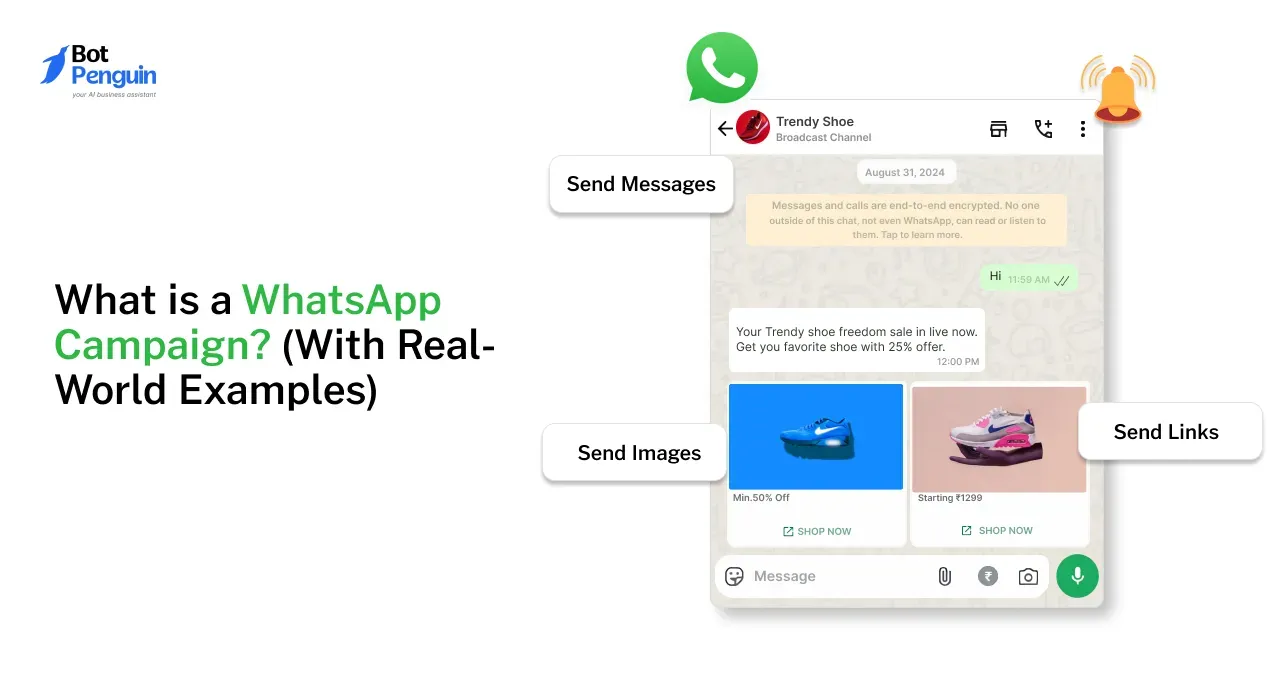Paid advertising in E-commerce marketing is now essential for any successful e-commerce marketing strategy.
Recent data shows that global spending on digital ads hit $378.16 billion in 2021 and is projected to grow to $786.82 billion by 2026 (Statista, 2022).
For e-commerce brands, paid channels like Google Ads, Facebook Ads, and Amazon Ads can drive targeted traffic leading to increased conversions and revenue. E-commerce companies using paid search increase their average order value by 18.4% (Wordstream, 2021).
This article will explore the latest trends and best practices for leveraging paid advertising in E-commerce marketing to boost e-commerce sales in 2023 and beyond. Tactics will range from mastering product listing ads to utilizing advanced audience targeting on social platforms.
Follow these data-backed paid advertising tips to increase ROI, lower customer acquisition costs, and stand out in the competitive e-commerce marketplace.
With the right paid marketing approach, any digital business can unlock substantial growth and sales in today's advertising-driven world.
What is Paid Advertising in E-commerce Marketing?
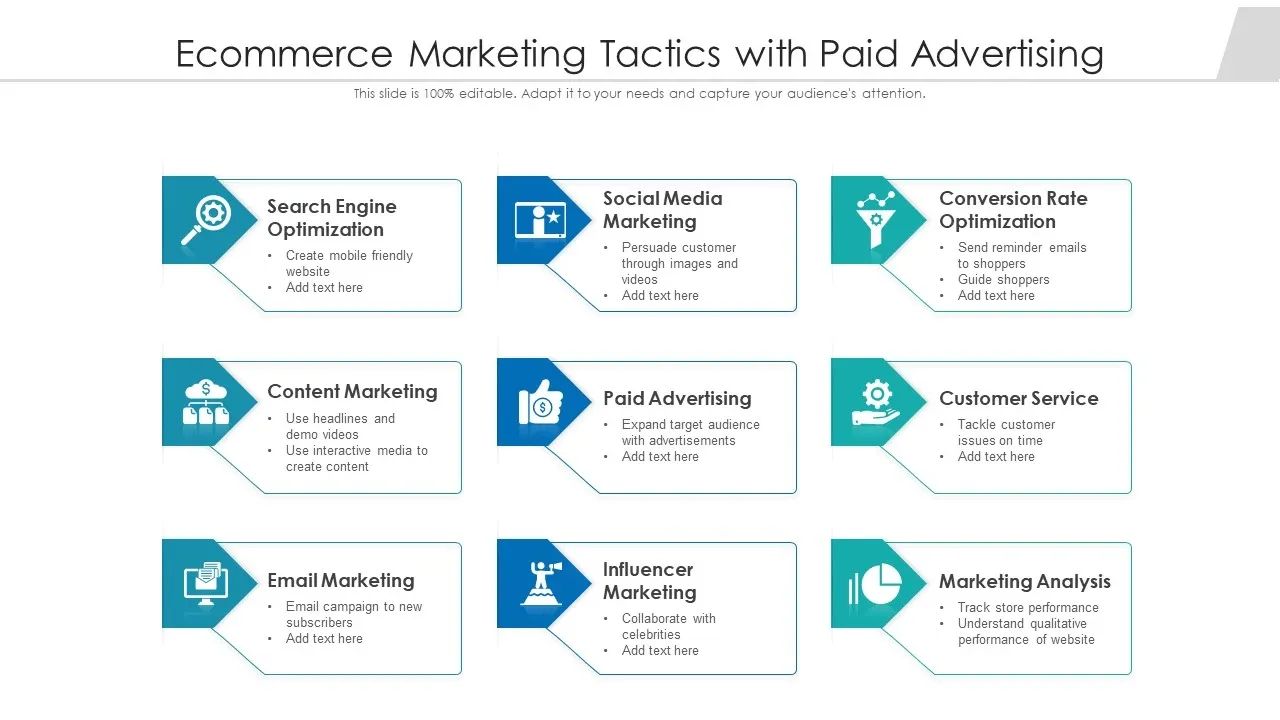
Paid advertising in E-commerce marketing, also known as pay-per-click (PPC) advertising. It refers to the practice of promoting products or services through online advertisements.
These ads are displayed on various platforms, such as search engines, social media sites, and websites. Unlike organic reach, where the visibility of your content is dependent on algorithms and user behavior, paid advertising in E-commerce marketing guarantees visibility by allowing you to bid for ad space.
You only pay when someone clicks on your ad, making it a cost-effective and targeted marketing strategy.
Importance of Paid Advertising in Driving Traffic and Increasing Sales

In the highly competitive, paid advertising in E-commerce marketing plays a crucial role in driving traffic to your online store and ultimately increasing sales. Here's why investing in paid advertising is worth every penny:
Increased Visibility
Paid ads ensure that your products or services are prominently displayed to potential customers who are actively searching for relevant keywords or browsing relevant platforms.
This increased visibility increases the chances of attracting qualified traffic to your website.
Targeted Reach
Paid advertising in E-commerce marketing allows you to precisely target your audience based on demographics, interests, browsing behavior, and purchase history.
By reaching the right people at the right time, you can maximize the chances of converting them into customers.
Immediate Results
Unlike organic strategies that may take time to yield results, paid advertising in E-commerce marketing delivers immediate visibility and traffic.
With proper planning and optimization, you can start seeing a significant impact on your sales numbers in a relatively short period.
Measurable and Trackable
Paid advertising in E-commerce marketing offers robust tracking and analytics tools that allow you to measure the effectiveness of your campaigns.
You can track key metrics like impressions, clicks, conversions, and return on ad spend (ROAS), giving you clear insights into the performance of your ads and the return on your advertising investment.
Understanding the Different Types of Paid Advertising in E-commerce Marketing
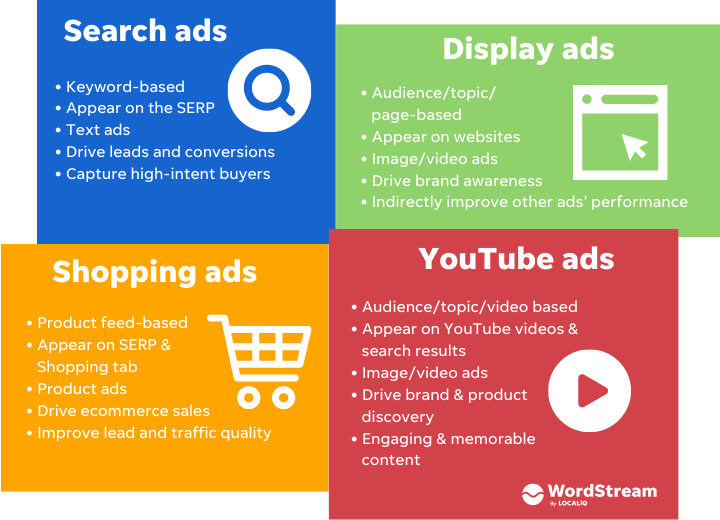
Paid advertising in e-commerce marketing helps businesses reach their target audience and drive conversions.
There are several types of paid advertising methods available, each with its benefits and advantages.
In this section, we will explore the three main types of paid advertising in E-commerce marketing and discuss the platforms and strategies associated with each.
Search Engine Advertising
First up is search engine advertising on platforms like Google Ads.
This targets users actively searching for products/services like yours, putting your brand in front of high-intent customers.
Craft targeted ads and bid on strategic keywords to get your business at the top of search engines, where over 50% of clicks happen.
Advertising in eCommerce Marketing
Then we have display advertising in E-commerce marketing. It is perfect for brand awareness.
Create captivating visual ads and get them seen across various websites, apps, and platforms. Target specific sites or audiences to increase engagement.
Social Media Advertising
Finally, social media advertising on Facebook, Instagram, etc. leverages user data for ultra-targeted ads.
Meet customers where they already spend time and turn them into loyal brand advocates.
In summary, leverage search for sales, display for visibility, and social for engagement. Align campaigns with business goals to get real ROI.
And if you want to upgrade your social media game consider implementing AI chatbots. With the advancement in technology, these chatbots are now capable of more than just answering frequently asked questions.
They are smart enough to conversate as naturally as humans, generate leads by interrogating the prospects with relevant questions, and set up drip campaigns that allow you to send a series of personalized messages on auto-pilot.
And taking your first step towards automation isn't that tough. Meet BotPenguin- the home of chatbot solutions. With all the heavy work of chatbot development already done for you, BotPenguin makes sure that you reach your customers where they are by offering chatbots for multiple platforms, thus making omnichannel support look easy:
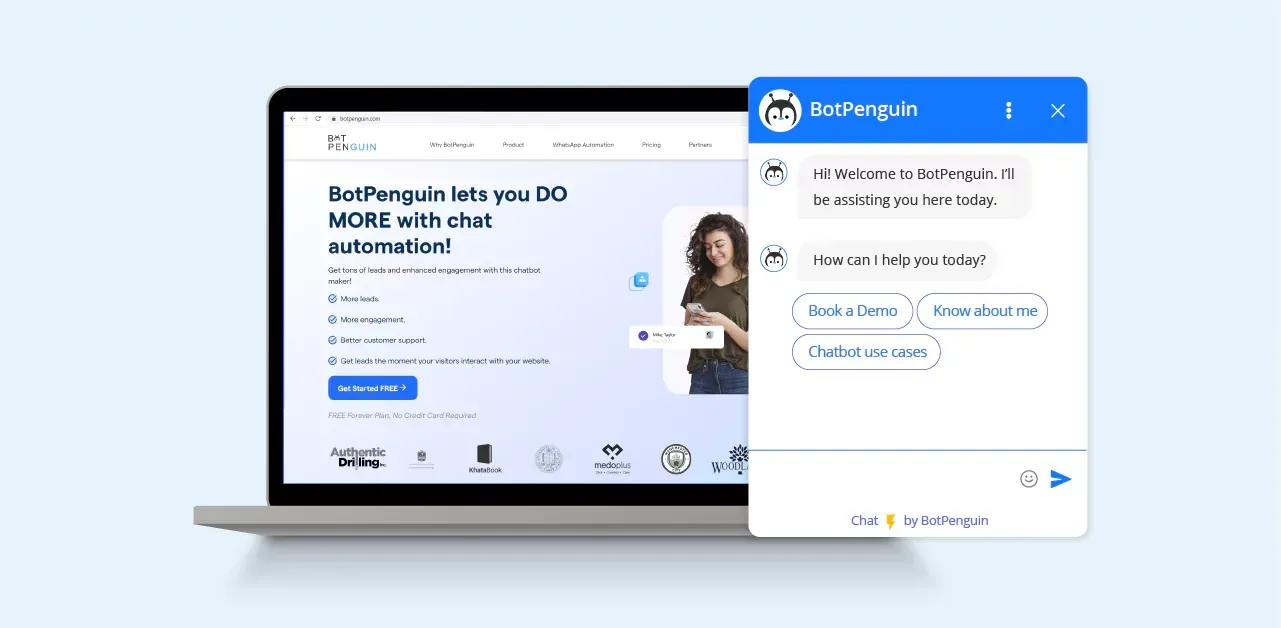
Monitoring and Optimizing Paid Advertising Performance
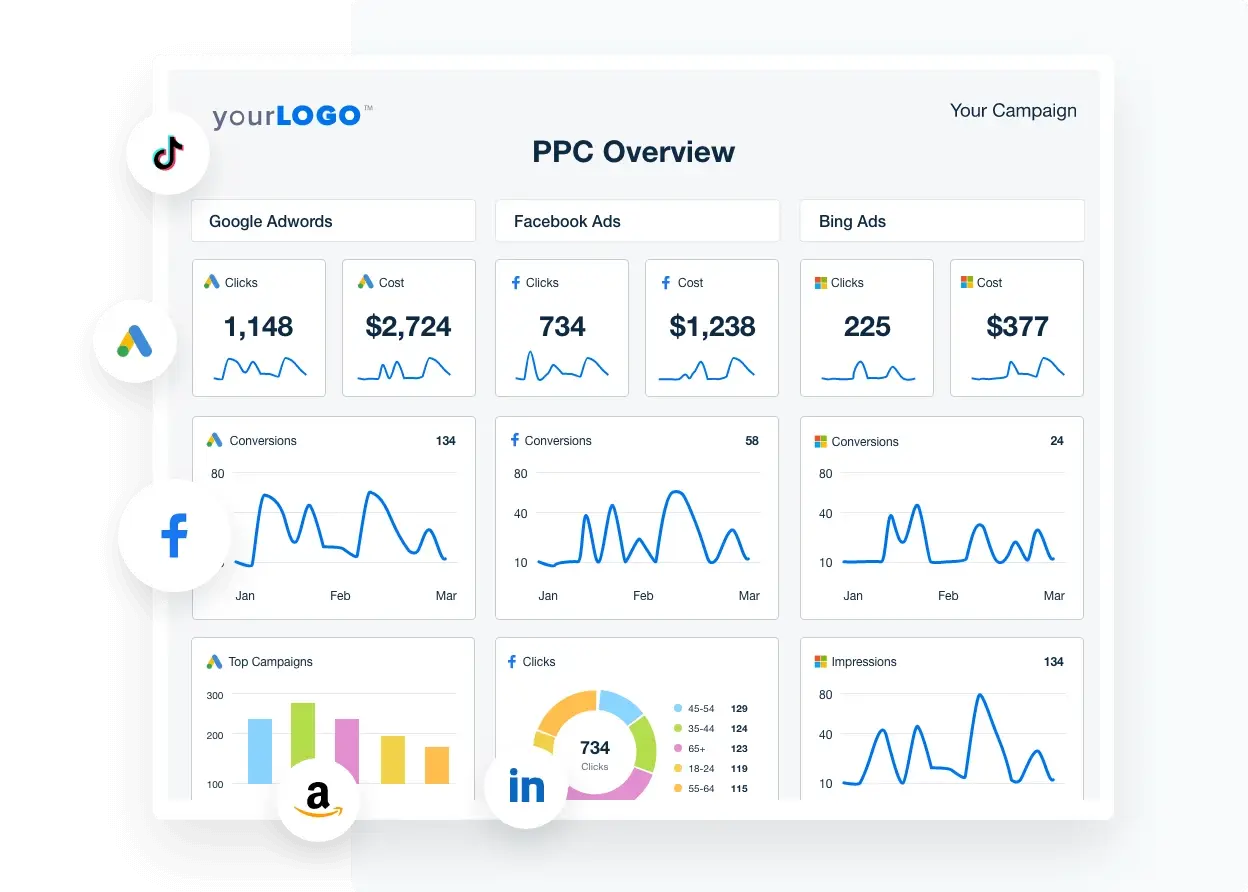
Here's how you can measure the success of your paid advertising campaigns:
Analyzing Key Metrics
Rolling out a paid ad is step one, but the real work comes in measuring and honing its effectiveness.
Savvy marketers know paid advertising in E-commerce marketing requires constant fine-tuning to realize its full potential.
Start by tracking standard metrics like clicks, impressions, conversions, and costs.
Analyze this data to glean insights into what's resonating with your audience and what's missing the mark. Look for trends across platforms, ad sets, and creatives.
Beyond vanity metrics, prioritize actionable insights you can use to iterate.
Test different target audiences, bid strategies, messaging, placements. Run A/B tests to find the optimal combination. Examine customer journey touchpoints to identify and eliminate leaks.
Optimization is a continuous process, but it's the key to paid advertising in E-commerce marketing. Adopt a test-and-learn approach, embrace experiments, and keep improving based on real data. With ongoing monitoring and agile optimization, you can transform mediocre paid ad results into a high-converting powerhouse.
Suggested Reading:
Important Metrics to Monitor
Some key metrics to monitor include:
- Click-through Rate (CTR)
The percentage of users who click on your ad after seeing it. A higher CTR indicates that your ad is compelling and relevant to your target audience.
- Conversion Rate
The percentage of users who complete a desired action, such as making a purchase or filling out a form, after clicking on your ad. A higher conversion rate indicates that your ad is successful in driving desired actions.
- Cost per Click (CPC)
The average cost of each click on your ad. Monitoring your CPC helps you understand the efficiency of your budget allocation.
- Return on Ad Spend (ROAS)
The revenue generated from your ad campaign compared to the amount spent on advertising. ROAS helps you assess the profitability of your campaigns.
Using Analytics Tools
Various analytics tools, such as Google Analytics or the advertising platforms' built-in analytics, can provide detailed insights into the performance of your ads. These tools can help you track and analyze metrics, create custom reports, and identify trends or patterns.
A/B Testing and Continuous Optimization
A/B testing involves creating multiple versions of your ad or landing page and testing them against each other to determine which performs better.
By serving these versions to different segments of your audience and comparing the results, you can optimize your campaigns for better performance.
Elements to Test
When conducting A/B tests, you can experiment with various elements, such as:
- Ad Copy: Test different headlines, descriptions, or call-to-action phrases to see which variations drive higher engagement.
- Visuals: Test different images, videos, or ad formats to identify the visuals that capture users' attention and drive better results.
- Landing Pages: Test different layouts, content, or forms on your landing pages to optimize the conversion rate.
Continuous Optimization
Optimization is an ongoing process in paid advertising. Based on the insights gained from analyzing key metrics and conducting A/B tests, you should continuously optimize your campaigns for better performance. Make data-driven adjustments to your targeting, bidding strategies, ad creatives, or landing pages to maximize the impact of your ads.
Avoiding Common Paid Advertising in E-commerce Marketing Pitfalls
Given below are some of the mistakes you must avoid while implementing paid advertising in E-commerce marketing:
Click Fraud and Invalid Traffic
Click fraud refers to fraudulent clicks on your ads to deplete your advertising budget and inflate ad performance reports.
Invalid traffic includes any clicks or impressions that are not genuine, such as bots or accidental clicks.
Falling victim to click fraud or invalid traffic can negatively impact your campaign's effectiveness and waste your resources.
Avoid Click Fraud and Invalid Traffic
To minimize the risk of click fraud and invalid traffic, consider these actions:
- Use ad fraud detection tools or services to identify and block suspicious or fraudulent activity.
- Set up click and impression tracking with reliable analytics tools to detect irregular patterns or sudden spikes in activity.
- Regularly monitor your campaign data and investigate any unusual or suspicious activity.
- Implement stringent targeting and exclusion criteria to avoid displaying ads to irrelevant or fraudulent audiences.
Ad Fatigue and Banner Blindness
Ad fatigue occurs when users become tired or bored of seeing the same ad multiple times, resulting in decreased engagement and conversion rates.
Banner blindness refers to users' tendency to ignore or overlook banner ads due to ad saturation.
These phenomena can significantly impact the performance of your paid advertising campaigns.
Ways to Mitigate Ad Fatigue and Banner Blindness
To prevent ad fatigue and banner blindness, try these strategies:
- Rotate your ad creatives frequently to keep your ads fresh and avoid overexposure.
- Test different ad formats and placements to maximize visibility and prevent users from becoming blind to your banners.
- Use retargeting campaigns to show personalized ads to users who have previously engaged with your brand. This can increase relevancy and reduce the chances of ad fatigue.
- Focus on creating highly engaging and relevant ad content that captures users' attention and stands out from the competition.
- By understanding and mitigating these pitfalls, you can ensure that your paid advertising campaigns remain effective and yield optimal results.
Conclusion
Nowadays, paid advertising in E-commerce marketing is essential for the success of any e-commerce business.
As we have explored, platforms like Google Ads, Facebook Ads, and Amazon Ads allow retailers to reach targeted audiences and drive conversions at scale.
By leveraging product listing ads, advanced audience segmentation, retargeting, and other data-driven tactics, brands can increase sales, lower acquisition costs, and see substantial ROI from paid campaigns.
The proof is in the numbers - with e-commerce paid search lifting order values by over 18%.
A strategic approach to paid advertising in E-commerce marketing can significantly impact an e-commerce brand's bottom line in 2023 and beyond.
By keeping up with the latest trends, monitoring performance, and optimizing for key objectives, marketers can connect with high-intent customers and drive revenue growth.
Paid advertising in E-commerce marketing remains a smart investment for any digital retailer - especially when leveraging the tips and frameworks covered in this article.
With the right execution, any e-commerce business can thrive by leveraging today's powerful paid marketing platforms.
Suggested Reading:
Frequently Asked Questions (FAQs)
What are the 5 C's of e-commerce?
The 5 C's of e-commerce typically refer to the customer, convenience, choice, communication, and cost. These elements are crucial for e-commerce businesses to understand and incorporate into their strategies to enhance customer experiences and drive sales effectively.
What are the 4 P's of e-commerce marketing?
The 4 P's of e-commerce marketing are product, price, place, and promotion. Understanding how to effectively manage these aspects is essential for creating a successful marketing strategy that resonates with the target audience and drives sales in the competitive e-commerce landscape.
What is the secret to e-commerce success?
While success in e-commerce can stem from various factors, a significant aspect often revolves around understanding customer needs, delivering exceptional user experiences, and consistently providing high-quality products or services, along with strategic and targeted e-commerce marketing efforts to drive traffic and conversions.

